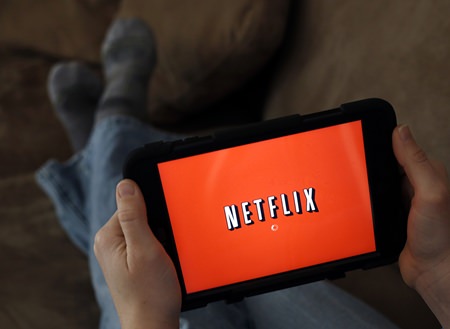
New York (AP) – The future of TV may well be a mishmash of streaming services that could rival the cost of a $100 cable bundle – but that are way more difficult to use.
Disney’s plan for two new streaming services (and possibly more) is just the latest sign that everyone is jumping into the streaming business. It intends to launch a kids-oriented movie and TV streaming service in 2019 that will pull Disney and Pixar films from Netflix, as well as an ESPN sidekick service (minus pro football and basketball) expected early next year. The company is even exploring the possibility of separate streaming services for its Star Wars and Marvel superhero films.
All of that will simply add to a cacophony of existing Netflix-style video services that let you watch what you want, when you want. More are probably on their way, as entertainment companies see profits in controlling not only the creation of their films and shows, but also their distribution.
The downside? Potentially bigger bills, and more work for people who just want to find something to watch. “Ultimately for consumers, it means that experience is dreadful,” says Paolo Pescatore, a vice president with research firm CCS Insight.
Problem One: Finding stuff to watch
New Yorker David Berkowitz still pays for cable, streams from Netflix and Amazon, and sometimes buys individual movies from Amazon; his three-year-old daughter already watches “Finding Dory” and “Finding Nemo” on two separate services. The prospect of a new Disney-only service isn’t reassuring. “Having a third thing in the mix seems like a lot to juggle,” he says.
To find stuff to watch, Berkowitz’s family uses a Roku box attached to their TV, which suggests streaming channels the family may like and lets them search for the shows and movies he wants to watch. There are also websites to guide streamers, like justwatch.com.
That’s fine if you know what you’re looking for. But the modern-day channel surfer has it much harder. “There’s going to be a proliferation of niche content,” says Colin Petrie-Norris, CEO of Xumo, a streaming-channel provider for smart TVs. “The way for it to be managed, findable for a user – that has not emerged yet.”
Problem Two: Paying the price
People quit cable because they can’t justify a $100-and-always-climbing monthly payment, especially with so much good stuff on cheaper services. But the cost of multiple streaming services adds up, too.
A $30 TV antenna gets you local channels – CBS, NBC, ABC, Fox, PBS, Univision – for free, though you have to watch whatever’s on at the moment unless you have a DVR. If you want to see the edgy shows everyone talks about, then Netflix is, for most, $10 a month; Amazon is $8.25 a month if you sign up for a year. Hulu starts at $8. HBO Now, $15.
Tickled by ads for a specific network show? “The Sinner,” an eerie-looking new Jessica Biel vehicle on USA, costs $20 on Amazon for the season. All that together is already more than $60 a month. It’s even worse if you’re a sports fan. MLB.TV is $113 for the year, and you won’t get home team games.
Berkowitz says he’s curious about the Disney service, especially since he expects to save money by cutting cable. “For us, if it’s $5 a month it’ll almost be like that impulse buy, go to a store and pick up a candy bar,” he says.
Disney hasn’t settled on prices yet, saying only it wants an affordable service that’s broadly appealing. Its DisneyLife streaming video app in the U.K. launched at 10 pounds a month in November 2015 and now costs half that – about $6.50.
Of course, Disney might still bundle Marvel movies and the Star Wars franchise into its service, which would help it appeal to a wider demographic. For kid’s programming, there’s already a lot out there. Much of it is free.
Darcy Hansen, a communications consultant and stay-at-home mom in the Dallas suburbs, has two kids under age 5 whose favorite show – “Sheriff Callie’s Wild West” – is a Disney series on Hulu. But a Disney app isn’t a must-have for her.
Her kids already watch “all sorts of things” on YouTube and on the free PBS Kids app, and they have Netflix too, Hansen says. “I don’t think Disney has a monopoly on children’s programming, in our house at least.”




